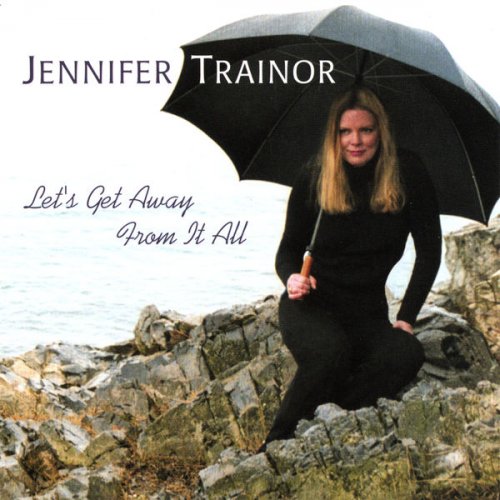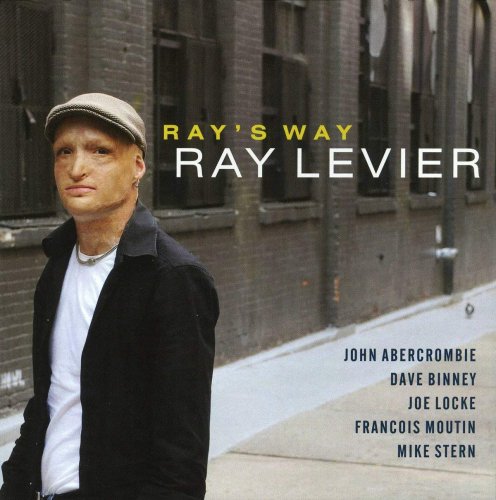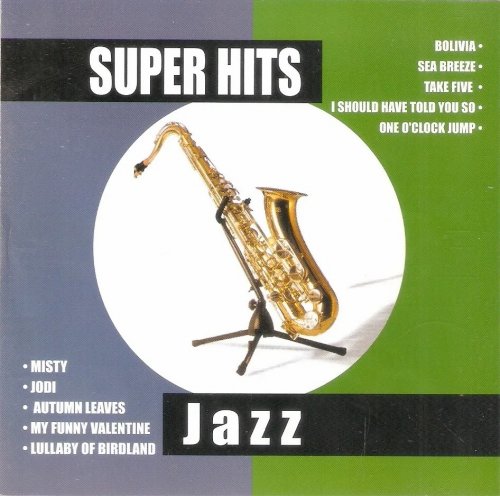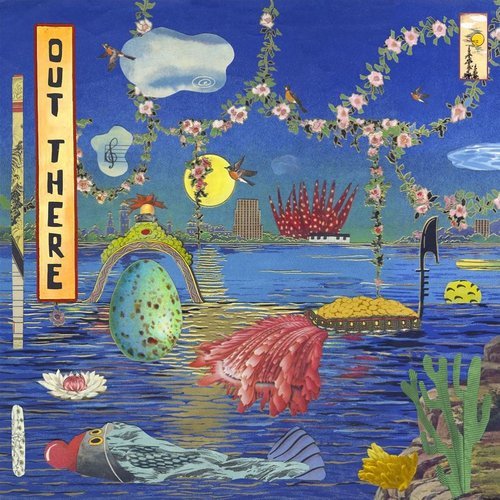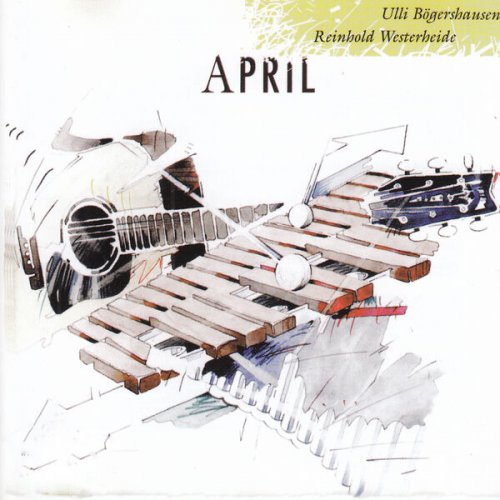Alan Ferber - Up High, Down Low (2023) [Hi-Res]
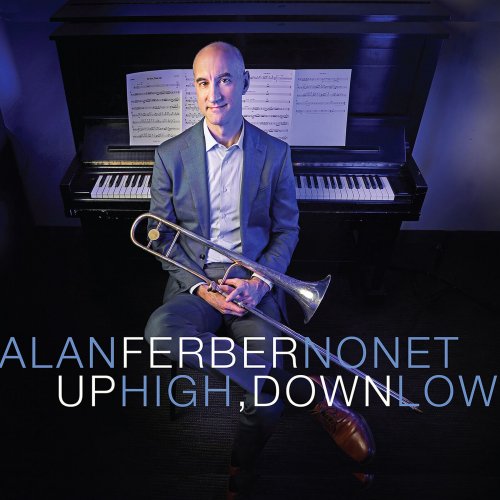
Artist: Alan Ferber
Title: Up High, Down Low
Year Of Release: 2023
Label: Sunnyside
Genre: Jazz
Quality: FLAC (tracks) / 24bit-96kHz FLAC (tracks)
Total Time: 60:26
Total Size: 356 MB / 1.16 GB
WebSite: Album Preview
Tracklist:Title: Up High, Down Low
Year Of Release: 2023
Label: Sunnyside
Genre: Jazz
Quality: FLAC (tracks) / 24bit-96kHz FLAC (tracks)
Total Time: 60:26
Total Size: 356 MB / 1.16 GB
WebSite: Album Preview
1. Up High, Down Low (7:07)
2. Brimstone Boogaloo (6:18)
3. Ambling (7:06)
4. The More I See You (7:10)
5. In Hindsight (7:37)
6. Cherokee Louise (6:36)
7. Violet Soul (5:18)
8. Day Breaks (6:40)
9. Ice Fall (6:38)
Up High, Down Low, Alan Ferber’s fifth studio album for his ongoing nonet of 20 years, continues his quest to synthesize soulful melodicism, rhythmic interplay, and resonant voicings with the ever-evolving musical elements that he absorbs as an active player, composer, and producer both inside and outside of New York’s jazz scene.
Over the past two decades, Ferber has become one of New York’s most sought after player-composers. He regularly collaborates on projects for forward-thinking bandleaders such as John Hollenbeck, Miguel Zenon, Darcy James Argue, Dafnis Prieto, and Toshiko Akiyoshi, as well as artists working outside of jazz including indie rock bands San Fermin, The National, Sufjan Stevens, and Bang a Can's Asphalt Orchestra. As a mentor, Ferber co-directs the BMI Jazz Composers Workshop, a well-regarded incubator for jazz composers in NYC, and teaches composition and arranging at Montclair State University and NYU. As a trombonist, Ferber topped the 2022 Downbeat Rising Star Critics’ Poll.
The pandemic’s arrival in 2020 led Ferber and his family to move to St. Louis, Missouri near his wife’s family, where they would end up staying for close to two years before returning. The collection of music on this new album was crafted there with his longtime nonet colleagues in mind. For Ferber, the best prescription for dealing with the social deprivation of the pandemic was to think about these close colleagues, to imagine their sounds and musical personalities, and create new music for them. Careful consideration of every interlocking line of counterpoint proved therapeutic, and Ferber crafted these scores as vehicles for his collaborators to express themselves soulfully within and around the written lines, allowing for a satisfying balance of ensemble cohesion and improvisatory freedom.
When restrictions lifted enough to gather, he reached out to local players in the St. Louis area to workshop the music. As luck would have it, Ferber discovered that the great saxophonist Chris Cheek was also residing in St. Louis, leading to a major change for Ferber’s instrumentation—the replacement of the bass clarinet with the baritone saxophone. With help from the local St. Louis bassist, Bob Deboo, the band began performing semi-regularly at a venue called The Dark Room. These gigs provided a litmus test for not only the music’s playability, but for how these new sounds connected with live audiences in the area. His interactions and invaluable feedback from these experiences have evolved into continuing performance engagements in the Midwest.
Upon returning to New York in 2022, Alan’s NY Nonet further developed the pieces at Smalls Jazz Club. With identical twins Alan and Mark Ferber setting the core framework, longtime collaborators Scott Wendholt, John Ellis, Jon Gordon, Nir Felder, David Cook, Chris Cheek, Charles Pillow, and Matt Clohesy convened to record the album in early July 2022 at Big Orange Sheep Studio in Brooklyn.
The title track of the album encapsulates an amalgam of Ferber’s influences both inside and outside of jazz. The piece creates room for interaction and personal expression, but it also draws from musical elements that are more typically heard in other genres—an indie rock-oriented chord progression, a rhythmic pulse that's closer to funk, and melodic hooks that draw from minimalist classical music. As the title suggests, the opening track works to successfully balance musical opposites: high versus low pitch ranges, light and dark instrumental textures, density of sound versus open airy space—all creating tension and release. Without the help of lyrics, these elements propel the musical story and create dialogue and playfulness amongst the players. Similar to the age-old high-five hand game played as children, “Up High, Down Low…”—the unpredictability of what follows creates the sense of anticipation for which the piece strives.
Originally composed for a main character in the popular video game Valorant, Ferber’s “Brimstone Boogaloo” fleshes out the groovy sounds of Lee Morgan, Quincy Jones, and ‘60s heist movie soundtracks to create a minor blues that is at once mysterious and head-bobbing. “Ambling” is set in the key of Db major, taking advantage of the sumptuous tone quality that the key’s tonic produces on the baritone saxophone. In Ferber’s updated five horn line-up, which substitutes baritone sax for the bass clarinet of his previous nonet albums, Cheek’s resonant and pitch-perfect low range is often used to anchor voicings, especially on this new original that gives a nod to both Strayhorn and another of Ferber’s heroes, Benny Golson.
Adapted from a bright, block chord arrangement by pianist Ben Waltzer, Harry Warren and Mack Gordon’s “The More I See You” is an up-tempo swing piece that is a great fit for a nonet that boasts so many soloists with deep fluency in the jazz language. Ferber’s “In Hindsight” revisits a commission he wrote for a California high school band that has since evolved into a perfect guitar feature for Nir Felder and beautiful trading saxes from Ellis and Cheek. Ferber’s trombone takes Joni Mitchell’s vocal duties on her “Cherokee Louise,” a lesser-known piece by the great songwriter that lends itself well to jazz arrangement, especially as Mitchell’s original recording featured a solo by the late, great Wayne Shorter.
Friend and arranger Ryan Truesdell commissioned a string quartet piece from Ferber a few years ago. Composing the right thing proved difficult until Ferber found a compositional sketch from his early twenties that he molded into “Violet Soul.” Here he rearranges the piece, creating an a cappella horn section melody that ultimately gives way to a classic jazz ballad feature for Jon Gordon. Ferber discovered Norah Jones’s “Day Breaks” on the Song Exploder podcast. Ferber remained in character with the original, mirroring a unique wah-wah effect with Harmon muted brass and allowing John Ellis’s gorgeous sax to waft over his whimsical arrangement. The program concludes with Cheek’s “Ice Fall,” a favorite piece of Ferber’s that he was able to re-arrange into a feature for Cheek on baritone sax.
The entire process of creating this album start to finish has been a buoy and beacon for Alan Ferber. Time and community helped conceive Up High, Down Low, and with its release, the time has come to celebrate the value of new friendships, the reunion of long-time colleagues, and the excitement of a new album’s worth of material to feature this nonet nonpareil on today’s scene.
Alan Ferber - trombone
Scott Wendholt - trumpet & flugelhorn
Jon Gordon - alto saxophone (all except 2 & 8)
John Ellis - tenor saxophone
Chris Cheek - baritone saxophone
Nir Felder - guitar
David Cook - piano, organ, keyboards
Matt Clohesy - acoustic & electric bass
Mark Ferber - drums & percussion
Charles Pillow - alto saxophone, alto flute, clarinet, bass clarinet
Daniel Diaz - percussion (1)
Over the past two decades, Ferber has become one of New York’s most sought after player-composers. He regularly collaborates on projects for forward-thinking bandleaders such as John Hollenbeck, Miguel Zenon, Darcy James Argue, Dafnis Prieto, and Toshiko Akiyoshi, as well as artists working outside of jazz including indie rock bands San Fermin, The National, Sufjan Stevens, and Bang a Can's Asphalt Orchestra. As a mentor, Ferber co-directs the BMI Jazz Composers Workshop, a well-regarded incubator for jazz composers in NYC, and teaches composition and arranging at Montclair State University and NYU. As a trombonist, Ferber topped the 2022 Downbeat Rising Star Critics’ Poll.
The pandemic’s arrival in 2020 led Ferber and his family to move to St. Louis, Missouri near his wife’s family, where they would end up staying for close to two years before returning. The collection of music on this new album was crafted there with his longtime nonet colleagues in mind. For Ferber, the best prescription for dealing with the social deprivation of the pandemic was to think about these close colleagues, to imagine their sounds and musical personalities, and create new music for them. Careful consideration of every interlocking line of counterpoint proved therapeutic, and Ferber crafted these scores as vehicles for his collaborators to express themselves soulfully within and around the written lines, allowing for a satisfying balance of ensemble cohesion and improvisatory freedom.
When restrictions lifted enough to gather, he reached out to local players in the St. Louis area to workshop the music. As luck would have it, Ferber discovered that the great saxophonist Chris Cheek was also residing in St. Louis, leading to a major change for Ferber’s instrumentation—the replacement of the bass clarinet with the baritone saxophone. With help from the local St. Louis bassist, Bob Deboo, the band began performing semi-regularly at a venue called The Dark Room. These gigs provided a litmus test for not only the music’s playability, but for how these new sounds connected with live audiences in the area. His interactions and invaluable feedback from these experiences have evolved into continuing performance engagements in the Midwest.
Upon returning to New York in 2022, Alan’s NY Nonet further developed the pieces at Smalls Jazz Club. With identical twins Alan and Mark Ferber setting the core framework, longtime collaborators Scott Wendholt, John Ellis, Jon Gordon, Nir Felder, David Cook, Chris Cheek, Charles Pillow, and Matt Clohesy convened to record the album in early July 2022 at Big Orange Sheep Studio in Brooklyn.
The title track of the album encapsulates an amalgam of Ferber’s influences both inside and outside of jazz. The piece creates room for interaction and personal expression, but it also draws from musical elements that are more typically heard in other genres—an indie rock-oriented chord progression, a rhythmic pulse that's closer to funk, and melodic hooks that draw from minimalist classical music. As the title suggests, the opening track works to successfully balance musical opposites: high versus low pitch ranges, light and dark instrumental textures, density of sound versus open airy space—all creating tension and release. Without the help of lyrics, these elements propel the musical story and create dialogue and playfulness amongst the players. Similar to the age-old high-five hand game played as children, “Up High, Down Low…”—the unpredictability of what follows creates the sense of anticipation for which the piece strives.
Originally composed for a main character in the popular video game Valorant, Ferber’s “Brimstone Boogaloo” fleshes out the groovy sounds of Lee Morgan, Quincy Jones, and ‘60s heist movie soundtracks to create a minor blues that is at once mysterious and head-bobbing. “Ambling” is set in the key of Db major, taking advantage of the sumptuous tone quality that the key’s tonic produces on the baritone saxophone. In Ferber’s updated five horn line-up, which substitutes baritone sax for the bass clarinet of his previous nonet albums, Cheek’s resonant and pitch-perfect low range is often used to anchor voicings, especially on this new original that gives a nod to both Strayhorn and another of Ferber’s heroes, Benny Golson.
Adapted from a bright, block chord arrangement by pianist Ben Waltzer, Harry Warren and Mack Gordon’s “The More I See You” is an up-tempo swing piece that is a great fit for a nonet that boasts so many soloists with deep fluency in the jazz language. Ferber’s “In Hindsight” revisits a commission he wrote for a California high school band that has since evolved into a perfect guitar feature for Nir Felder and beautiful trading saxes from Ellis and Cheek. Ferber’s trombone takes Joni Mitchell’s vocal duties on her “Cherokee Louise,” a lesser-known piece by the great songwriter that lends itself well to jazz arrangement, especially as Mitchell’s original recording featured a solo by the late, great Wayne Shorter.
Friend and arranger Ryan Truesdell commissioned a string quartet piece from Ferber a few years ago. Composing the right thing proved difficult until Ferber found a compositional sketch from his early twenties that he molded into “Violet Soul.” Here he rearranges the piece, creating an a cappella horn section melody that ultimately gives way to a classic jazz ballad feature for Jon Gordon. Ferber discovered Norah Jones’s “Day Breaks” on the Song Exploder podcast. Ferber remained in character with the original, mirroring a unique wah-wah effect with Harmon muted brass and allowing John Ellis’s gorgeous sax to waft over his whimsical arrangement. The program concludes with Cheek’s “Ice Fall,” a favorite piece of Ferber’s that he was able to re-arrange into a feature for Cheek on baritone sax.
The entire process of creating this album start to finish has been a buoy and beacon for Alan Ferber. Time and community helped conceive Up High, Down Low, and with its release, the time has come to celebrate the value of new friendships, the reunion of long-time colleagues, and the excitement of a new album’s worth of material to feature this nonet nonpareil on today’s scene.
Alan Ferber - trombone
Scott Wendholt - trumpet & flugelhorn
Jon Gordon - alto saxophone (all except 2 & 8)
John Ellis - tenor saxophone
Chris Cheek - baritone saxophone
Nir Felder - guitar
David Cook - piano, organ, keyboards
Matt Clohesy - acoustic & electric bass
Mark Ferber - drums & percussion
Charles Pillow - alto saxophone, alto flute, clarinet, bass clarinet
Daniel Diaz - percussion (1)

